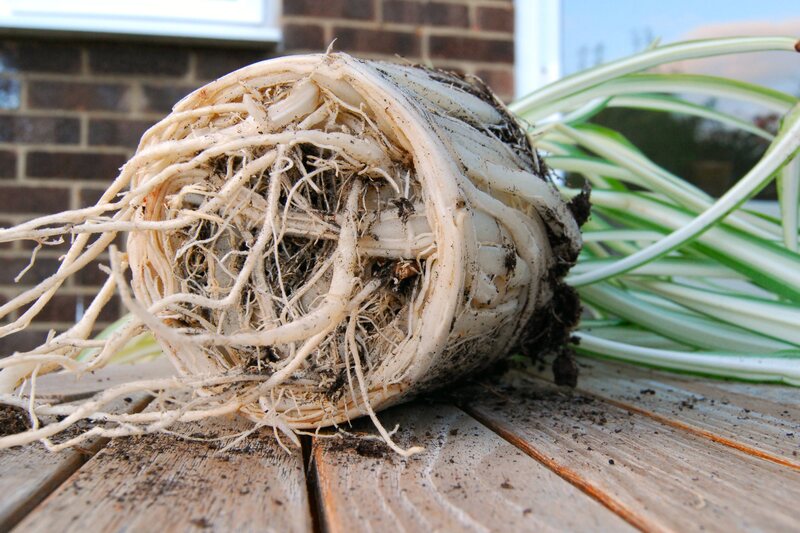Craft a lush oasis with your own herb network
Posted on 27/05/2025
Craft a Lush Oasis with Your Own Herb Network
Imagine stepping out your back door and being greeted by lush, fragrant greenery--a personalized herb network that not only delights the senses but also supplies you with fresh, organic ingredients for your kitchen year-round. With a little planning and creativity, you can transform your space--be it a sprawling backyard or a cozy apartment balcony--into a verdant oasis teeming with living flavor. In this comprehensive guide, we'll show you how to build your own herb network, offering in-depth strategies and tips for creating a garden that's both beautiful and highly practical.

Why Build a Herb Network?
Herb gardening is more than just a rewarding hobby--it's an investment in your well-being, your menu, and your environment. Here are some compelling reasons to establish your own integrated herb oasis:
- Year-round access to organic, fresh herbs.
- Reduction of your grocery expenses and food waste.
- Enhanced flavor and nutrition in every dish.
- Support for local pollinators and a healthier ecosystem.
- Therapeutic benefits from gardening and connecting with nature.
What is a Herb Network?
A herb network is more than a random collection of plants. It's a thoughtfully planned system where each herb's placement, potting, and companion planting are considered to maximize growth, yield, and beauty. Think of it as a living tapestry--each herb supports the others, creating a resilient, lush, and self-sustaining ecosystem right where you live.
Planning Your Herbal Oasis
Evaluating Your Space
Your herb network can thrive in a surprising variety of locations. Consider:
- Urban balconies or rooftop gardens
- Traditional backyard beds
- Kitchen windowsills for indoor networks
- Vertical gardens or hanging planters
- Community Garden plots
No matter what space you have--even a sunny window can become the hub of your own herbal network.
Choose the Right Herbs
When building a lush garden network, it's crucial to select herbs tailored to your microclimate, sunlight, and culinary preferences. Here are popular options to consider:
- Basil - Great for Italian and Asian dishes.
- Rosemary - Thrives in dry, sunny spots.
- Mint - Vigorous and needs containment.
- Parsley - A biennial burst of green that handles partial shade.
- Thyme - Hardy and drought-tolerant.
- Coriander/Cilantro - Best in cooler climates, bolting in heat.
- Oregano, chives, sage, dill, and tarragon.
*Experiment with exotics like lemongrass, shiso, or lemon balm to expand your herb garden network.
Designing Your Herbal Layout
Think of your herb network as a living, evolving project. Here are some key design strategies:
- Position sun-lovers (e.g., basil, rosemary) in your brightest spots.
- Grow shade-tolerant herbs (mint, parsley) beneath taller plants.
- Plan for different heights to add visual interest and maximize space.
- Cluster herbs with similar watering needs together.
- Intermix herbs with edible flowers or leafy greens for diversity.
Establishing and Expanding Your Herb Network Oasis
Soil and Containers
Excellent soil is the foundation of a thriving herb oasis. Use a light, well-draining organic mix bolstered by compost or worm castings. If growing in containers, ensure there's adequate drainage, and don't be afraid to integrate self-watering planters or vertical wall pockets for a modern herb network feel.
Planting Techniques for a Lush Network
- Sow from seed for cost savings and variety.
- Start with transplants for an instant garden effect.
- Try layering--planting taller herbs behind or above lower-growing species.
- Space plants for good air circulation and healthier growth.
- Incorporate mulch to conserve water and reduce weeds.
Herb Network Maintenance: Keeping Your Oasis Lush
Watering Wisely
Herbs prefer consistent moisture but hate soggy roots. Allow the top inch of soil to dry before watering again, and always water in the early morning or late evening to minimize evaporation. For container herb networks, check daily during hot weather.
Feeding Your Network
Organic fertilizers, like compost tea or fish emulsion, keep herbs vibrant and productive. Avoid chemical fertilizers, as they can overload fragile herbs and reduce flavor intensity.
Pruning and Harvesting
Regular cutting encourages bushier, healthier growth. Pinch back basil before it flowers, snip mint often, and harvest just before herbs bloom for peak aroma and nutrition. Dry or freeze extras to keep your pantry stocked.
Pest and Problem Management
- Encourage natural predators like ladybugs and lacewings.
- Companion plant with marigolds or nasturtiums to ward off aphids.
- Inspect regularly for pests before infestations grow.
- Use gentle organic sprays like neem oil if necessary.
Creative Ways to Expand Your Herb Network
Vertical and Hanging Gardens
Maximize every inch by installing vertical wall planters, tiered shelves, or hanging baskets. These are ideal for shallow-rooted herbs like thyme, oregano, or chives and bring greenery to fences, balconies, or kitchens.
Herb Spirals and Raised Beds
Create a striking, space-efficient raised bed or spiral mound. These spiral designs allow for diverse microclimates (dry on top, moist at bottom), accommodating a wider range of herbs in a compact footprint--a true network of herbal abundance.
Edible Landscaping
Integrate herbs into your landscape borders, pathways, and flower beds. Lavender, sage, and rosemary double as beautiful ornamentals and pest repellents.
Hydroponic and Aquaponic Networks
Leverage modern hydroponic or aquaponic systems for a cutting-edge indoor herb network. These recirculating setups can fit any home and deliver abundant, pesticide-free yields.
The Social Benefits of an Herb Network
Building an herb network can go beyond your garden. It becomes a source of:
- Sharing with neighbors or local food pantries.
- Creating community through seed swaps or herb-themed dinners.
- Teaching children about food origins, ecology, and self-sufficiency.
- Promoting health and mindfulness through time in nature.
Harvesting, Storing, and Enjoying Your Herbal Oasis
How to Harvest for Best Results
Harvest in the morning, after dew has evaporated and before the sun heats up the oils. Use clean, sharp scissors or snips. For leaf herbs, be sure not to remove more than one-third of a plant at a time to keep it vigorous.
Storing Your Herbs
- Fresh use: Keep snipped stems in a glass of water or wrapped in a damp towel in the fridge.
- Drying: Tie small bunches and hang in a cool, well-ventilated space.
- Freezing: Chop and pack into ice cube trays with a little water or olive oil.
- Infusions: Make herbal oils, vinegars, salts, or even soaps and teas for year-round enjoyment.
Cooking and Wellness Uses
Your herb network oasis opens a world of flavor and well-being, from pestos and marinades to teas, tinctures, and soothing balms. Explore fermenting, herbal cocktails, and even natural cleaning solutions. Each harvest brings a new opportunity to savor the bounty of your own lush oasis.

Top Tips for Maintaining a Thriving Herb Garden Network
- Rotate your crops or pots annually to prevent soil-borne diseases.
- Label your herbs for easy identification and to help guests learn.
- Mulch well, especially in hot climates, to reduce watering needs.
- Prune aggressively--most herbs thrive with frequent cutting.
- Keep experimenting--swap varieties, try new arrangements, and share your successes!
Conclusion: Create Your Personal Herbal Retreat
From a few pots on a windowsill to an elaborate backyard labyrinth, crafting a lush oasis with your own herb network is a journey that rewards body, mind, and spirit. With thoughtful planning, a touch of creativity, and a willingness to experiment, you'll find yourself enjoying a never-ending harvest of aroma, flavor, and beauty. So dig in, connect with nature, and let your herb garden network transform your culinary adventures and well-being.

